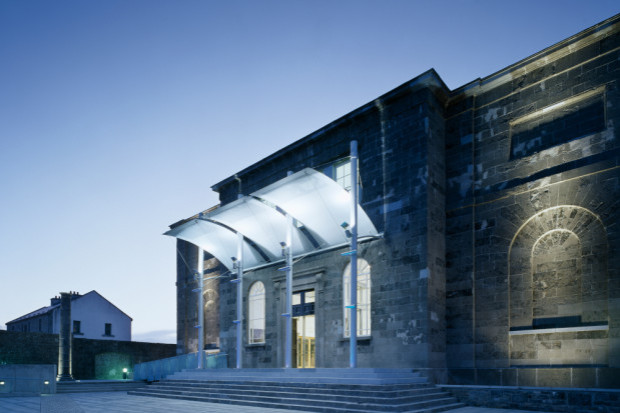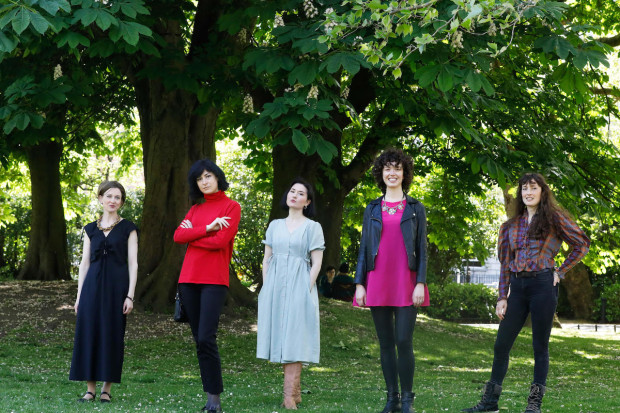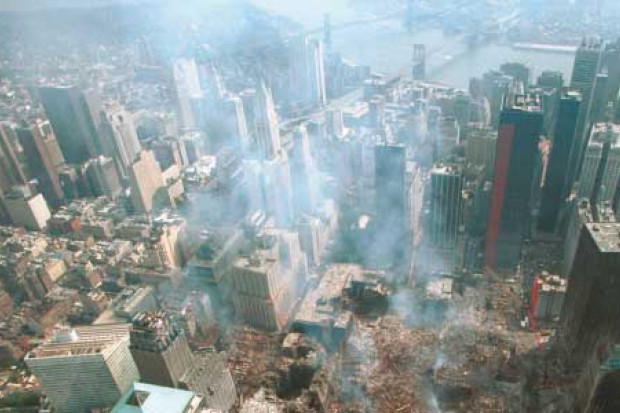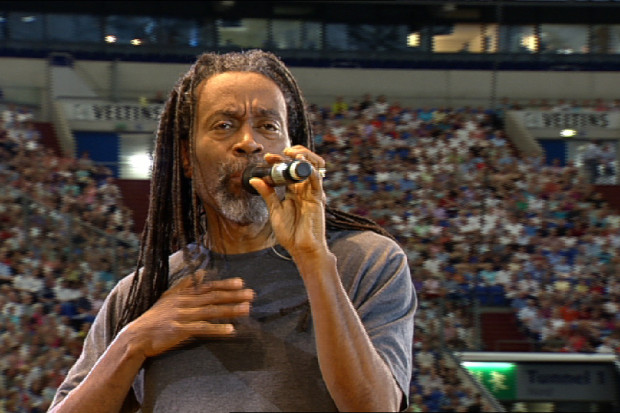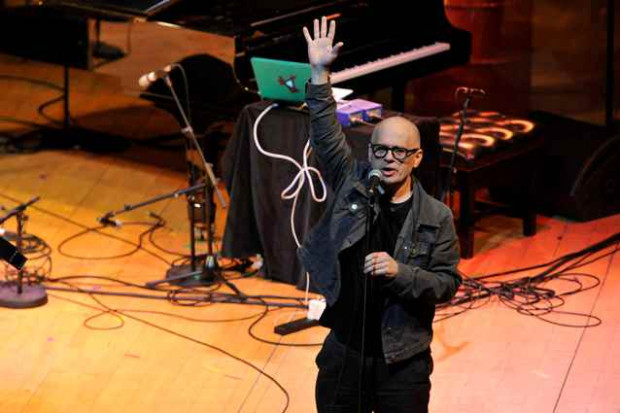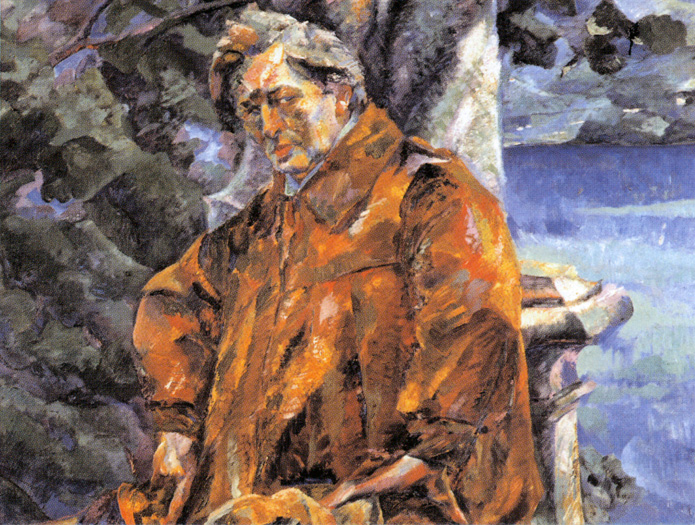
Ferruccio Busoni painted by Umberto Boccioni, imagining the future.
What's New?
New music, especially music we might find radically new, doesn’t seem to be as much of a talking point today as it was a century ago. In 1912, the composer Arnold Schoenberg had been writing music independent of conventional harmony and key for a few years; composer Igor Stravinsky was between his ballets Petrushka and the Rite of Spring, both of which brought the musical depiction of Russian culture into new rhythmic and melodic worlds; while in America, Charles Ives was beginning to experiment with using multiple keys, time signatures and even tuning systems simultaneously. In 1907, the composer Ferruccio Busoni had written a Sketch of a New Aesthetic of Music calling for a broad-based experimentation with new musical possibilities, making excited observations about the first ever synthesiser in the process. Europe was buzzing with debate and controversy over new music — but can we say that the same is true today?
Of course, there’s still a great deal of interest in new artists, new concerts and new records in 2012, but there seems to be little forum for wholly new sounds or ways of making music. It’s taken for granted that new music will fit more or less neatly into one of the many genres on offer — pop, rock, jazz, hip hop, folk, dance, classical — and that we’ll get it on CD, mp3, or, if we’re a little more stylish, vinyl. Perhaps this is because the music industry mediates the way we imagine and approach music in a much more comprehensive way than it did a century ago, and it relies on maintaining some very particular ideas about taste, authenticity and reliability in persuading us it offers the best product.
Or perhaps it’s because the twentieth century saw such an extreme breadth of innovation right across the world of music-making, subtle and radical, social and technological, that it’s started to feel as if everything has been done before, at least in any significant sense. The Beatles perfected the pop song; rock music went everywhere from pubs to stadiums and from three-chord punk to hair-raising virtuoso metal solos; jazz went from the twelve-bar blues to the open universe of free jazz; hip hop, which has sampled every kind of music around, now comes from practically every country in the world and runs the gamut from basic dance fodder to gangster to intellectual social critique. Classical music was reduced to apparent silence by John Cage and expanded into complexity at the very fringes of human capacity by Brian Ferneyhough. Dance music beats can be found from fifty beats per minute to 250. Whatever music you can imagine, it seems, has already been done, and it’s waiting for you somewhere in the depths of iTunes.
It’s not surprising that in the twenty-first century, the idea of ‘new music’ carries little of the weight or urgency that it did in 1912. It seems that musicians and listeners don’t have much left to do but maintain and enjoy the rich musical landscape that human civilisation has already created. Could any situation be more comfortable? Who needs new music? In order to answer that, we have to ask ourselves what role music plays in our cultures and our lives. I like to argue that music is even more than an entertainment, a decoration or supplement to our lives and our experience. I might even argue that music is more than an artform, as understood in the traditional way. Music is one the most important ways that we understand and construct ourselves and our cultures. Look at the ways teenagers use it so passionately to understand themselves and their independence from whatever context — often their families. We also use music to reflect and explore our moods and interests on a day to day basis. As the music sociologist Tia deNora said, music is a ‘technology of the self’. Music is who we are.
It follows, then, that new music means new people, new cultural differences and contexts. And do we need these? Always, of course, and especially at a time when culture and society is struggling to know what it thinks about new crises, new technologies, new and changing environments, and new values. The possibilities for new forms of music today are no less infinite than they were in 1912, when the world was on the precipice of some of the most dramatic changes ever seen in the history of humanity. In fact, thanks to electronic and PC-age technologies of sound-synthesis, sampling, effects and CD-burning, infinite musical possibilities are closer and more numerous than ever before. Yet even though new music is there for the taking, the odds seem stacked against it. Beyond believing in the urgency of new music, we seem to have a difficulty even imagining it in its broadest, most open senses.
In continental Europe and especially Germany, ‘New Music’ is the term given to what in the UK and America is usually called ‘contemporary classical music’. But even more so than in the English-speaking countries, this New Music is a highly interconnected culture with roots in the music of Schoenberg, Boulez and Stockhausen, which meets at events like the Donaueschingen Festival and the Darmstadt Summer School. Even when new music is the deliberate focus, however, it is only particular ideas about novelty that are entertained. This is the model of music-making headed up by a composer who passes on directions to performers of nineteenth-century acoustic instruments, who then display the work at a concert where the audience is silent and passive — a model that goes unquestioned for the most part, albeit with a few recent technological augmentations.
Sometimes new music is older than we think. But old music can also be newer than we think. My book Infinite Music: Imagining the Next Millennium of Human Music-Making was my attempt to understand exactly what new music is and how we could imagine and create it even if there are constraints on our perceptions of novelty that we hadn’t considered. I felt forced to come to the conclusion that new music is always relative, dependent on the context and even on the minds of its listeners. One can say that ‘there’s nothing new under the sun’ and that practically any new music has some element in it that has already been done before, whether it be the instruments, the harmonies, the textures, the structures, or something as broad as the concert setting. But it’s also true that ‘we cannot step twice into the same river’ — even when we perform the same piece of music again, there will be slight changes to it that make it new.
Any given musical performance, then, is a mix of the old and the new. Knowing this can open up our minds to the possible changes that can be made — musicians can ask themselves what has been done over and over and over again without anyone questioning it, and start thinking of alternatives. New music always offers these alternatives as a reaction against a context of established conventions, conventions like those about how melodies are formed, how instruments are used, how a performance develops and even how musical creativity is shared out in performance. It’s just a case of noticing those conventions and understanding that there are no ultimate rules about music-making, just an infinity of possibilities. And somewhere in those infinite possibilities there is a match waiting to be made between a new music and a new self, a new kind of person, a new culture.
Seeing new music as relative and flexible also shows us that all music has a uniqueness that is forever new, that even old music has something new to say in the right context, and that nothing has ultimately been ‘done before’. This can help to dissolve the impression of a fixed cultural landscape of musical possibilities that will forever define the music of the new generation. Music’s possibilities are infinite but they are also infinitesimal. As well as imagining a modern musical culture that is highly omnivorous, keeping up with huge amounts of change and variety, it is also possible to imagine an intensive musical culture, with just as much detail and variety but focused on a smaller range of possibilities (such as in some kinds of folk music, where only a relatively small repertoire of songs is in constant use).
The line between ‘new’ and ‘old’ music will always shift. But this shouldn’t be an alibi for musical conservatism. We owe it to ourselves and to our cultures to imagine the new musical worlds of tomorrow, and the next day, and the day after.
Published on 30 August 2012












